Lughnasa Waning Artemis Moon
Had an odd experience as I rode the lawn tractor back to the garage after putting all the no longer needed honey supers in the shed, putting the spun out frames back on the hives and heading back along the vegetable garden toward the truck gate. I felt like a real boy.
A la velveteen rabbit, that is. Something about having followed the bee-keeping from last year’s single colony, a package that Mark Nordeen helped me hive into hive boxes he loaned me, through the divide and hiving a package on my own this spring, over the course of the summer and the nectar flow, through to this moment, with the honey in jars, stored now at home, in the bee’s care no longer, triggered a gestalt, a deep link between my Self and this cycle of nature in which I had participated. Somehow that made me feel real.
Now, I don’t go around in skeptical philosophical clothing all day wondering whether or not I exist. At least not any more. Joke. I mean I have a developed sense of who I am and what I am, but this particular feeling, a oneness, an at-one-ment with this place and the work of another species, I’ve never experienced. It may relate to my relatives who farmed, a now, finally, getting it, what it meant to milk the cows or bring in the corn harvest, even to gather a clutch of eggs in the morning.
Whatever it is, it felt good. Right.

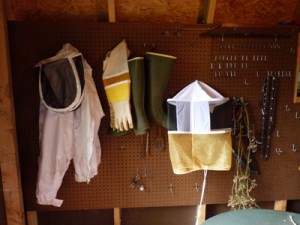
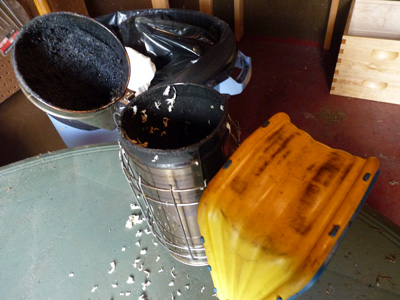
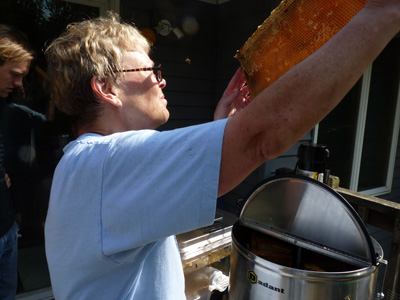 Doing the extraction. The frames with honey go in the extractor, lid up. Then they whir around and centrifugal empties them of their honey while leaving the honey comb intact. That means next year’s bees won’t have to waste energy building comb. They can go straight to honey production.
Doing the extraction. The frames with honey go in the extractor, lid up. Then they whir around and centrifugal empties them of their honey while leaving the honey comb intact. That means next year’s bees won’t have to waste energy building comb. They can go straight to honey production.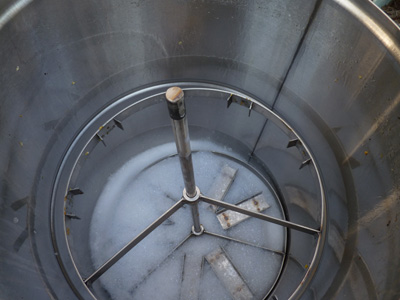
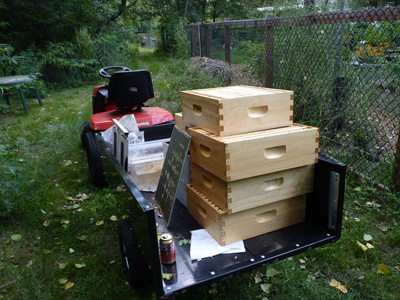
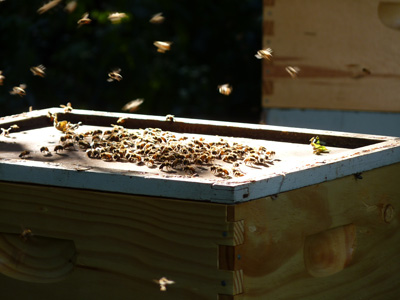
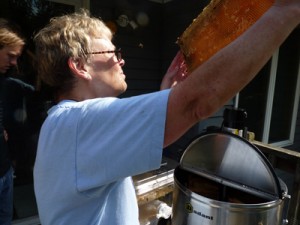 capping, there is an additional step, uncapping. Kate did this chore with the electric uncapping knife. We had at least one extractor run with 80% or more capped. This honey was darker. We can bottle it right out of the extractor after filtering.
capping, there is an additional step, uncapping. Kate did this chore with the electric uncapping knife. We had at least one extractor run with 80% or more capped. This honey was darker. We can bottle it right out of the extractor after filtering.